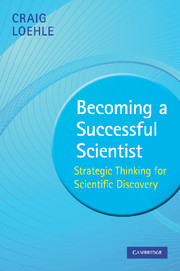3 - Scientific discovery in practice
Published online by Cambridge University Press: 05 June 2012
Summary
The second chapter of this book presented the techniques of strategic thinking in terms of the nature of problem solving, how discoveries are made and tested, how creativity can be harnessed and enhanced, and how attitude and style affect strategic problem solving effectiveness. This provides the foundation for actual strategic problem solving in terms of the mastery of one's cognitive tools and abilities. Such an understanding is essential to success, but there is more to it than this. There are characteristics of the problems themselves that one must also get a feel for before even the best strategist can be successful. To make an analogy, it is not sufficient for the sculptor to have an aesthetic vision, to know the symbolism he wishes to convey, and to have harnessed his mental faculties to the task, it is also essential that he understand the nature of his materials: the way that different woods respond to carving and polishing, the receptivity of these woods to stain, the susceptibility of different types of stone to cracking, and so on. That is, one must know something about the subject to be strategized about per se. This is usually considered domain-specific knowledge (of cars or diseases, of pizza or electronics) which of course is beyond the scope of this book because there are hundreds of domains and their intersections where people are faced with problems.
- Type
- Chapter
- Information
- Becoming a Successful ScientistStrategic Thinking for Scientific Discovery, pp. 130 - 207Publisher: Cambridge University PressPrint publication year: 2009



